Healthy Kids Through Active Tech: The 2019 Integrated Product Development Trade Show
For many working families with active children, it's not hard to imagine a scenario like this: mom or dad is stuck in traffic, their child waiting to be picked up from school or one of many extra-curricular activities.
The parents are waiting to get their child a cell phone until age 12. But today at, let's say age 10, their schedules are already full, making situations like this more and more likely. While the parents race to get their child, the kid wonders, "Should I walk home? Should I wait? How much longer will they be?"
For the team of University of Michigan (U-M) students behind Voco, a new smartwatch prototype and companion app that lets kids and parents communicate without the internet, social media, and other "distractions" involved, solving this problem helps put parents at ease, but the primary motivation is to help kids form healthy tech habits while empowering them to be more independent.
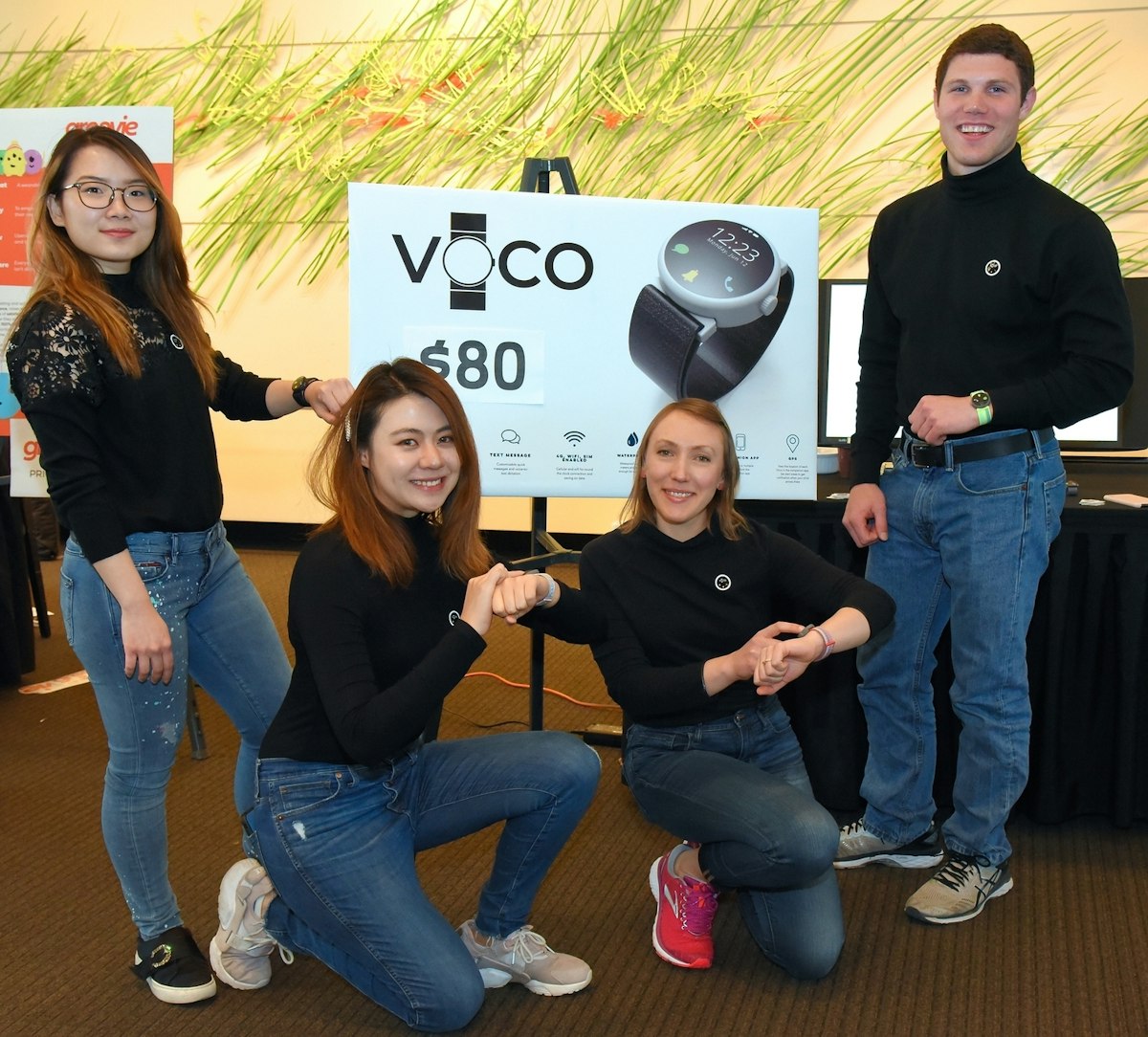
The four-member student team worked on the project throughout the Winter 2019 semester in U-M’s Integrated Product Development (IPD) course. The six-credit class is led by faculty from the Stamps School of Arts & Design and the Ross School of Business. Instructors Stephanie Tharp (Stamps) and Eric Svaan (Ross) build the interdisciplinary teams of students from Art & Design, Business, Engineering, and Information to develop products addressing problems faced by a specific demographic of potential users. This semester's challenge: design a user-centric product that uses active technology to help preadolescent children (ages 9-12) form healthy habits.
During a final trade show event hosted at Ross on April 10, 2019, Voco team members Noah Rick (a dual major at Stamps and Engineering '19) and Katie Adams (Master of Science in Information '20), demonstrated to visitors how Voco could help with scenarios like the one described above. For their demo, Rick and Adams used a working prototype of the app and a physical model of what the watch would look and feel like once manufactured.
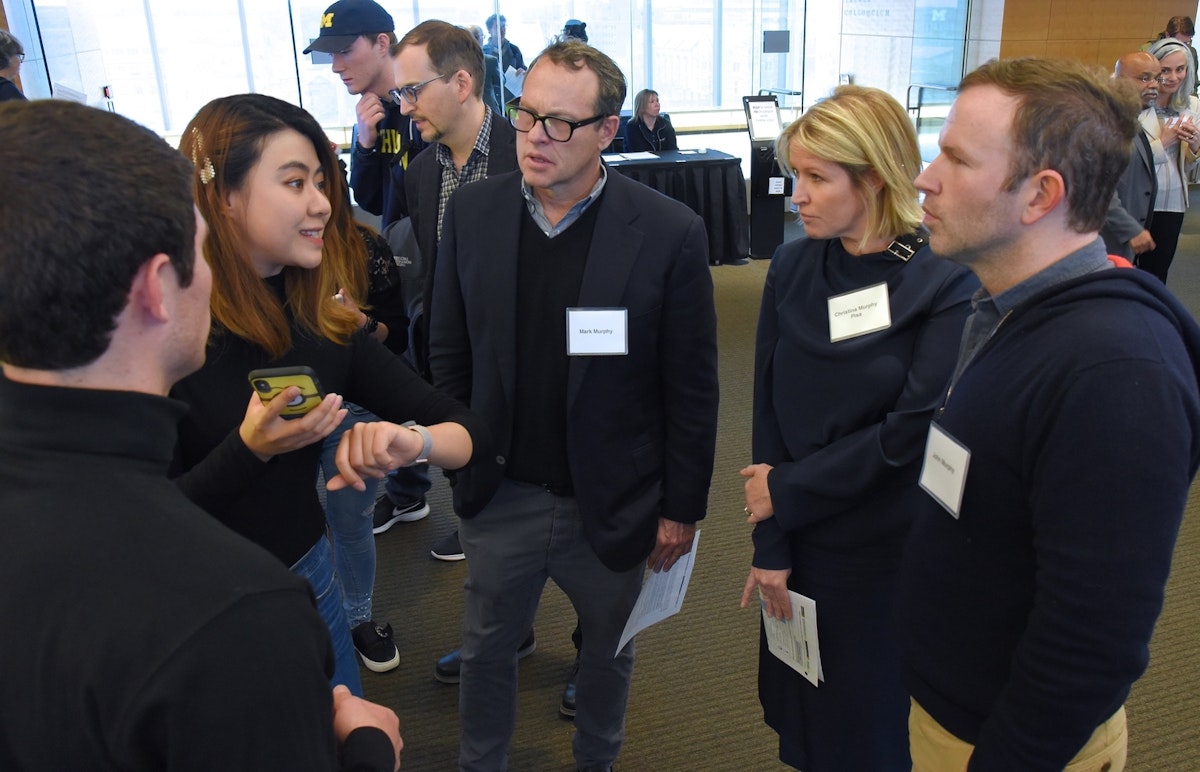
Other groups at the show also offered products encouraging kids to establish healthy habits, such as drinking more water, limiting screen time before bed, and starting meaningful conversations with their parents. Attendees could "vote" for their favorites by indicating how much money they would spend on each from a starting "budget" of $150.
This year the Sarah S. Murphy Prize, a special juried prize of $5,000, was also awarded to the group which a panel of judges determined best met the assigned criteria, brought something new to the field, and had the best chance of commercialization. Groovie — a wearable device that encourages kids to set and meet goals — walked away with the prize, but the judges agreed that all groups were particularly strong when it came to understanding their users this semester, thanks in large part to a design charrette many of them took part in at the start of the course in January 2019. That successful model of pairing a charrette with a follow-up course also won Svaan and Tharp a 2019 Provosts Teaching Innovation Prize.
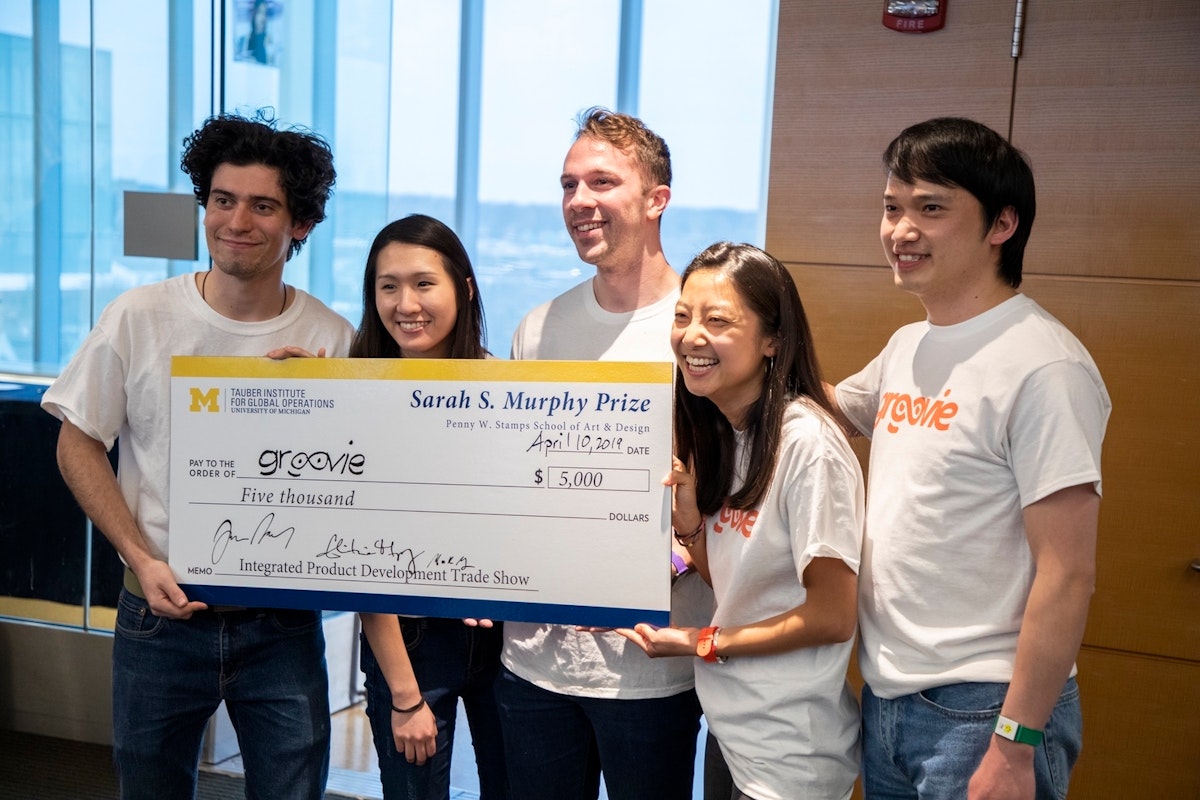
The VentureWell Hacking Health Design Charette was the second hosted by Stamps and the first to be incorporated into the IPD course. Tharp says the results were noticeable.
"A lot of the teams were able to generate really good insights that have carried into the work, because if you don't generate those deep insights, it's kind of transparent," she says. "People can see when you don't really understand a user or demographic very well."
Voco members Rick and Adams, alongside many of their classmates, participated in the daylong workshop focused on gathering input from pre-adolescent children on forming healthy habits and solving problems related to focus areas like technology usage, nutrition, physical activity, and sleep.
The charrette also included healthcare experts from campus and beyond, working in child psychology, public health, medicine, counseling, and other related fields and was facilitated by students from the Stamps Masters in Integrative Design (MDes) program.
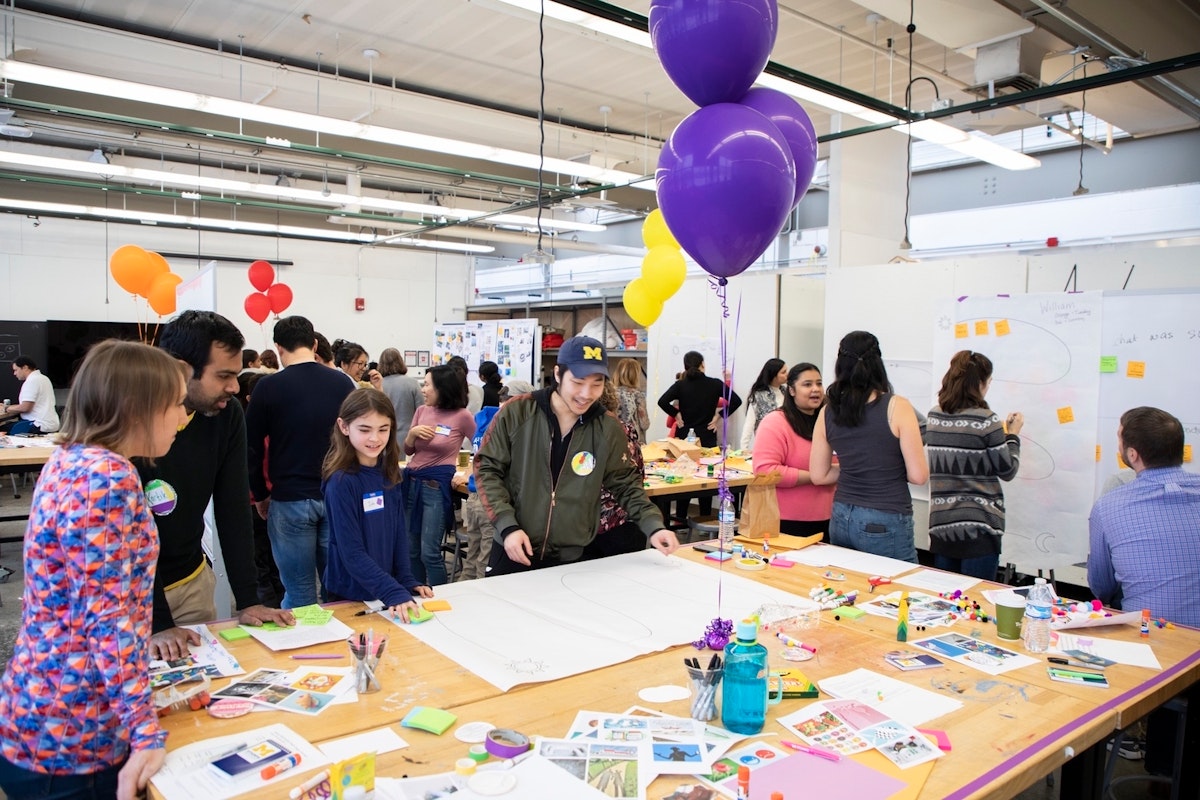
Gathered around large tables covered in colorful build materials — pipe cleaners, fuzzy balls, Play-Doh, washable markers, stickers — kids made collages, mapped out a typical day in their life, and eventually constructed prototype gadgets that could be used to help solve different problems. Encouraged to get creative, they came up with adventurous concepts, like a machine that puts fast food flavor into broccoli or another that measures appropriate portion sizes of whatever you're eating.
After the kids left for the afternoon, small groups analyzed the kids’ prototypes to generate insights that helped them brainstorm their own ideas. Afterward, the groups reflected on the day before reporting back to the larger group. A few echoed the playful style of the day's guests — a "magic" food bowl that fills itself with just what a child needs, a sleeping cap that makes teachers dream about kids' busy schedules — alongside more serious ideas to help reduce technology usage at bedtime and reward kids for choosing healthy snacks. Everyone agreed: today's kids are busy and enamored with technology, for better or worse. But many are already forming good habits and looking for ways to do better.
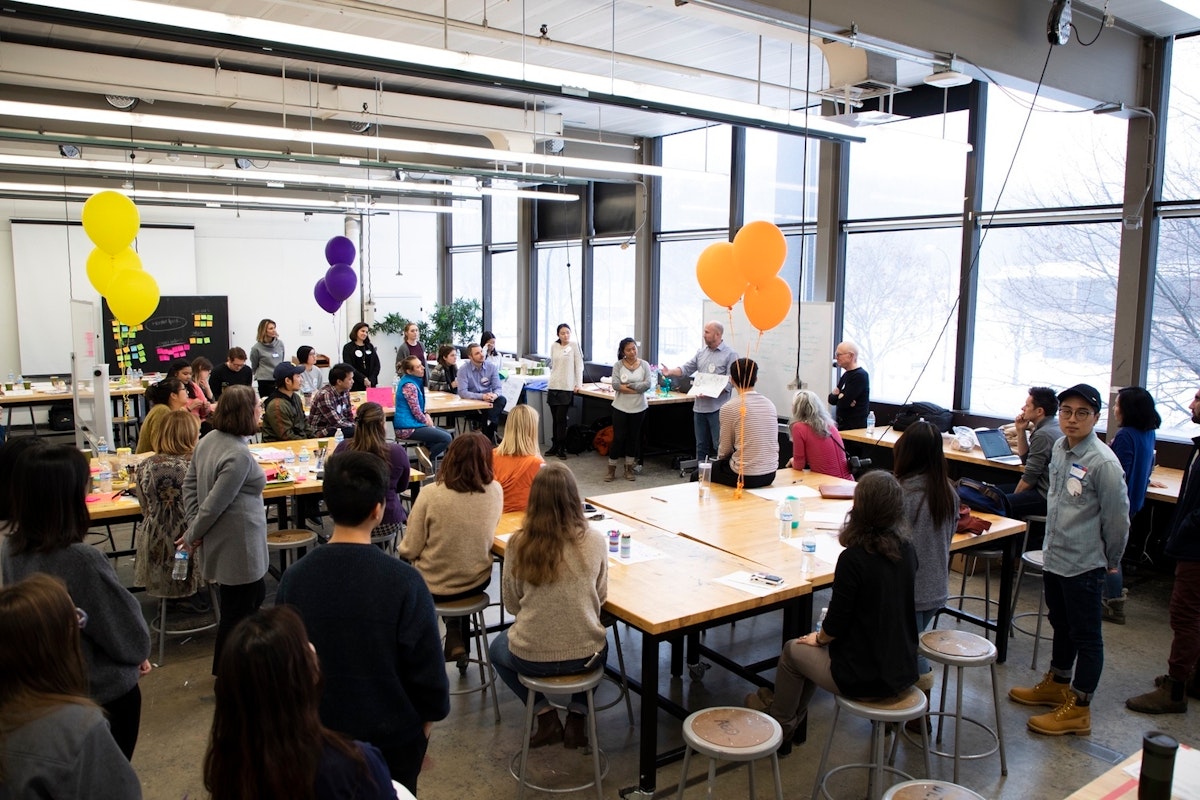
Documentation from the day was saved and used as a starting point for students taking IPD in Winter 2019. Wrapping up, Svaan told those students in attendance: "remember all this stuff, because besides the cardboard and tape prototypes, you guys will make actual working products."
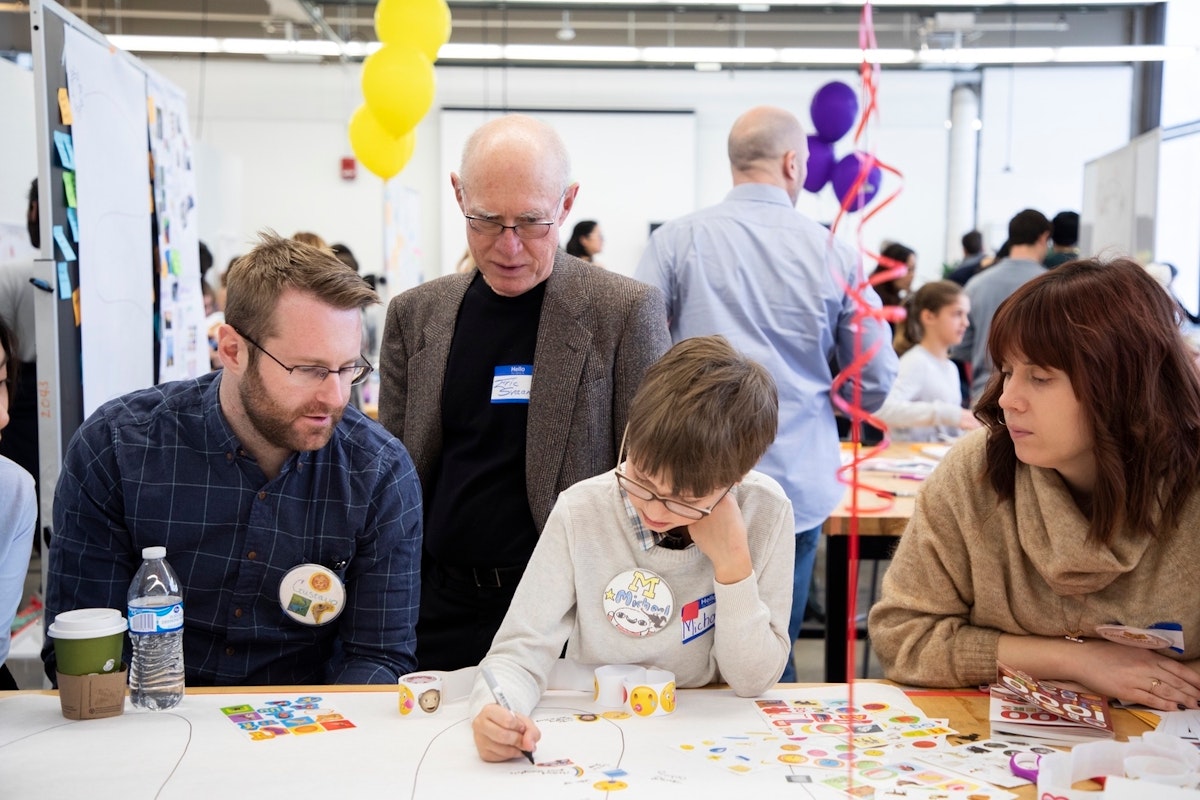
For Adams, Rick, and fellow groups members Aye Thander and Yunqi Qian, that working product became Voco, but not right away. Adams was in the technology group, Rick in the nutrition focused one.
"Coming out of the charrette, we had many disparate ideas of how we could help children create healthy habits, ranging from more physical activity-based to more nutrition-based to more mental and emotional health-based," Adams says.
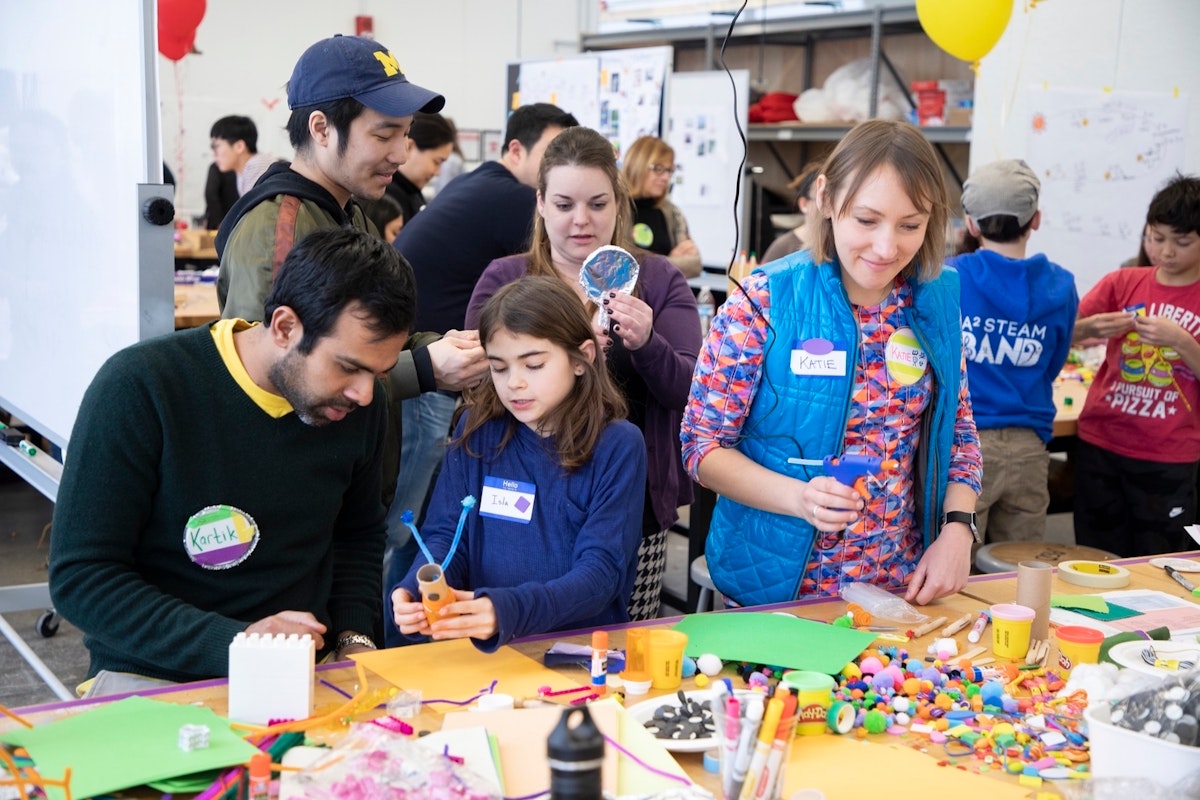
Initial ideas ranged from a soothing sensory pod children could use to calm themselves, to cutting boards printed with kid-friendly recipes and paired with a companion nutrition and grocery list app, to clothes and accessories that change color based on the wearer's movements.
As the semester went on, the group narrowed its scope by sharing these concepts with children and parents. The one common theme that kept surfacing was that children in this age group are looking to assert their independence and make decisions on their own.
Through ongoing conversations and by staying in touch with one of their charrette contacts — a child psychology and digital media specialist at Central Michigan University — the group started looking at ways to allow communication between children and parents that didn't require a child to carry a smartphone. The idea is to limit the issues that come with constant internet access and increased screen time at a young age while helping kids feel more independent.
"We're looking at how we may be able to facilitate a healthy habit moving forward with technology," Rick says.
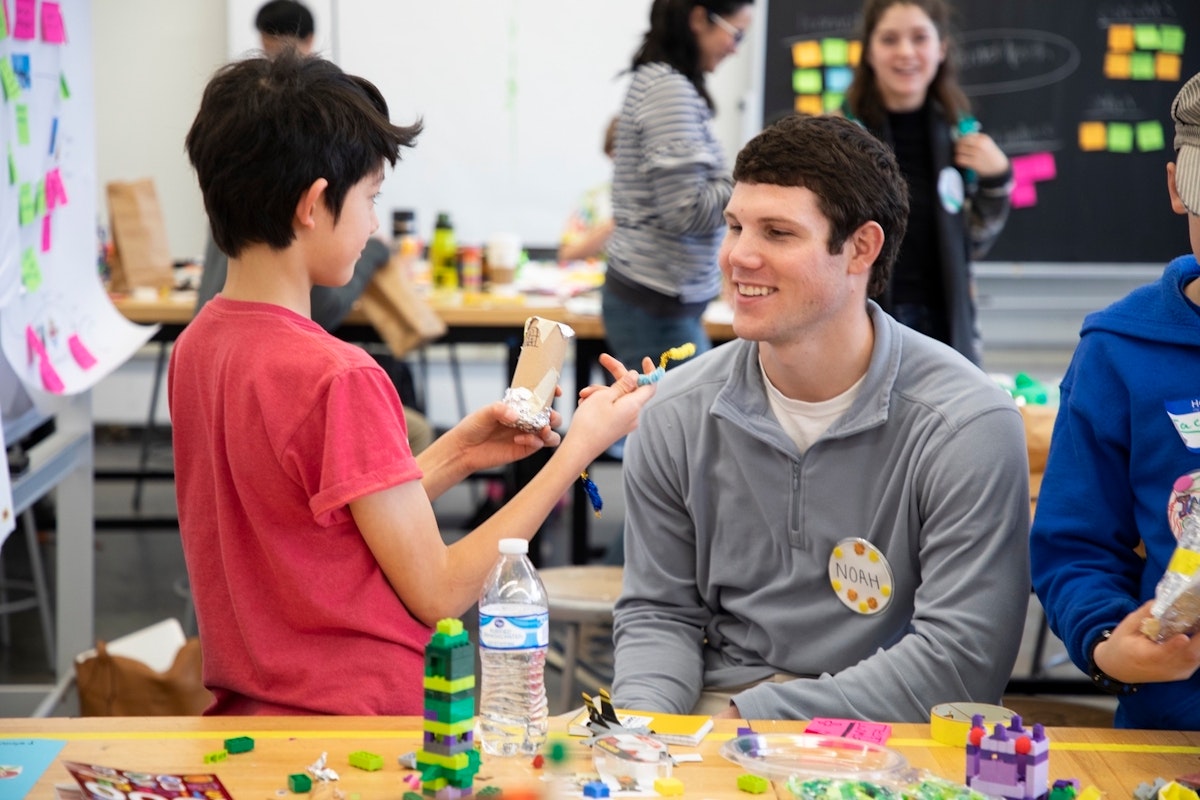
Voco lets kids communicate by text message, voice call, and emojis, and also set reminders for themselves and track their own steps. Parents or primary guardians can use an application online or their smartphone to set limits on who their child can contact with Voco. The idea is to have them start with immediate caregivers before expanding the network — maybe a couple of close friends during certain hours of the day, for example — once a child shows they're ready. Parents can also track the device by GPS and receive notifications when their child has arrived at a destination.
"It doesn't have the habit that a phone comes with," Adams says. "This one is specifically meant to bridge a gap for someone who has a kid they need to communicate with, but they don't want to give them a device that has access to Instagram and Facebook and all those distractions."
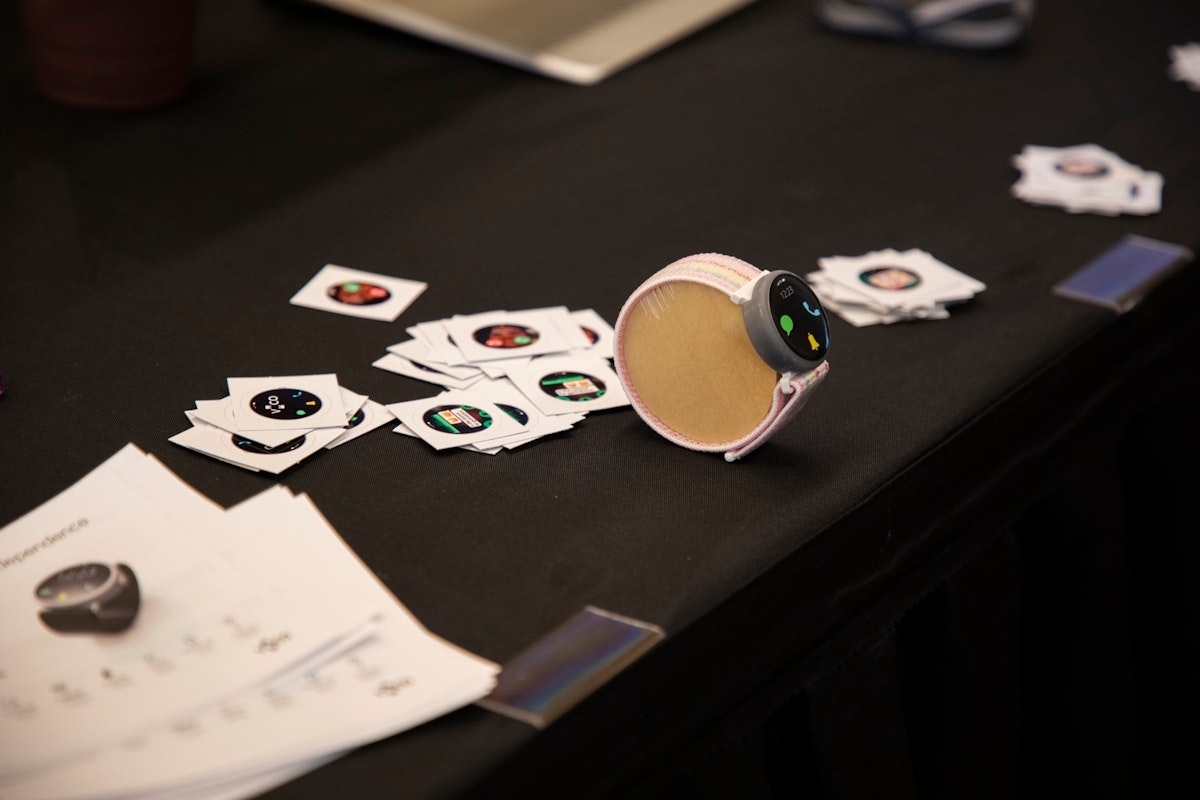
Just a few weeks before the trade show, and in the final studio session before for their third and final design review with industry experts, Adams and Rick were going over the details of what still needed to be done. Scrawled across a large sheet of paper, different tasks were mapped out into "swim lanes." There was still plenty to do, from big ticket items, like cost analysis and pricing, user interface adjustments, messaging, marketing, and website design, down to small details, like how to give the model watch a glossy face resembling a real screen.
While getting it all done in time is priority, Tharp encouraged the group not to throw out what they had learned — and demonstrated — throughout the process, as they prepared to tell Voco's story to the public.
"They just really understand the user group," Tharp says. "The things they need and the things they're going through."

For example, Rick says it's not enough to make Voco a communication tool for kids without phones. It also has to be something they want to wear and doesn't carry a stigma.
"We've learned there are some other products with similar functions, but they almost kid-ify the device," Rick says. "When they're 8, it might be acceptable and fun and cool, but by the time you reach 11, they're like, 'I don't want to be seen with this.'"
For Adams, she felt like the group was onto something after asking her own niece and nephew — ages 5 and 7 — to rank the watch's features.
"By the end, they were asking their parents when they could get one," Adams says. "So that was validating."
To learn more about IPD and to explore the 2019 trade show, visit tauber.umich.edu/form/ipd-trade-show.